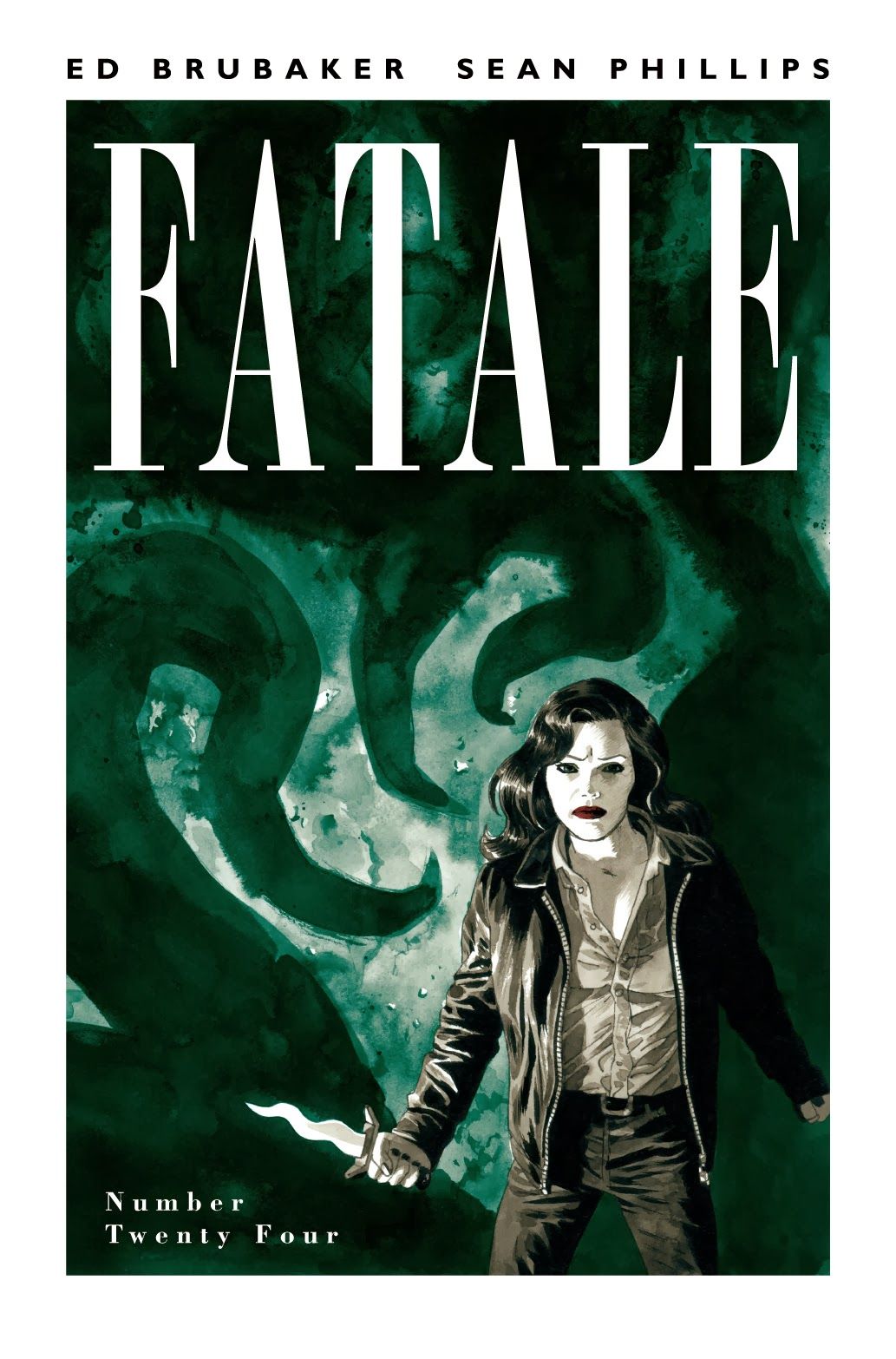Ed Brubaker and Sean Phillips' "Fatale" #24 is an oversized and significant issue, bringing their smart, gruesome, generation-spanning story to an appropriate and satisfying -- if grim -- conclusion
"Fatale" #24 opens with several pages of fantastic "flat" art done in a storybook -- almost woodcut -- style as Brubaker lays out an old fairy tale that serves not as a direct telling of Josephine's history, but as a nice metaphor for where Brubaker is taking the story. It's a wonderful device that sets a dark and devastating tone early on that reminds readers not to dare hope for happy endings, because there is no such thing.
Phillips and Elizabeth Breitweiser nail the execution of the storybook portion, using flatter colors and a brighter (though not sunny) palette, all of which contrasts excellently with the more realistic, darker and more nuanced tones of the rest of the book. Phillips' art, which has always been flawlessly on point for "Fatale," is particularly important in this final issue as Josephine -- the ageless and mesmerizingly beautiful (literally) main character -- finally ages. Many comic book artists have trouble drawing old people, especially old women, but Phillips handles it expertly, delivering a version of her that manages to feel like Josephine, despite looking nothing like her. With the exception of a few final pages, the book takes place at night and Breitweiser simple drapes the entire book in layers of magnificent blue. The soft blue tint to Josephine's moonlit skin, the endless blues of the ocean, the coats of both dark and pale blue on a cemetery and woods at night is all massively impressive in its depth. And the slashes of blood red as a result are simply shocking on the page.
Josephine's plan goes wrong (Or does it? Brubaker leaves that a bit ambiguous), but Josephine's plan is so ingenious that even going wrong, she still gets what she was aiming for, if with a bit more bloodshed, pain and casualties than she had expected. Still, Josephine and Nick are standing in the end -- or a general approximation of standing -- Nick a ruined man and Josephine soon on her way out thanks to seriously severe old age. Standing, in this case, under these circumstances, doesn't feel like a victory, nor should it. Their lives have been ruined for no real reason except the pursuit of power by, as Josephine puts it, "People who worship monsters."
Whether Josephine intends that statement to include her or not, readers certainly know it includes the men who have worshipped her to their own peril. Easily the most significant and wonderful thing Brubaker has done in this series is to take the traditional femme fatale role, something too often paper thin and unexamined, and turn it directly on its ear. He has found a largely unexplored facet of already well-mined material and done something wonderful with it. Josephine is both hero and villain, protagonist and antagonist, monster and victim. There's no real truth because she is an exercise in shades of grey. Who Josephine is and the choices she has made are just a few of the many fascinating layers that make her such a well-developed and significant character in comics.
Brubaker and Phillips' "Fatale" is an excellent example of the great modern comic -- an exercise in perfecting storytelling, in creating a cohesive and consistent vision for an entire story the same way you would expect a great novel, film, or television show to look and feel. "Fatale" #24 is an excellent example of why this is a book to be read again and again, standing the test of time, in spite of the fact that -- or perhaps because -- people will always worship monsters.

